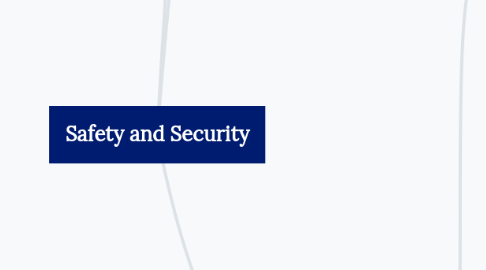
1. Physical Safety Hazards
1.1. Electrocution
1.1.1. Open wires
1.2. Fire hazard
1.2.1. Overloading of socket
1.3. Tripping hazard
1.3.1. Trailing wires
1.4. Personal injury
1.4.1. Heavy equipment
2. E-safety
2.1. Data Protection Act
2.1.1. Data Protection Act **(DPA)**
2.1.1.1. Legislation used to protect data
2.2. Personal Data
2.2.1. Basic personal data
2.2.2. Sensitive personal data
2.3. E-safety
2.3.1. Internet
2.3.2. Emails
2.3.3. Online gaming
3. Security of data
3.1. Data threats
3.1.1. Hacking
3.1.2. Phishing
3.1.3. Vishing
3.1.4. Smishing
3.1.5. Pharming
3.1.6. Malware
3.1.6.1. Virus
3.1.6.2. Worms
3.1.6.3. Trojan horse
3.1.6.4. Keyloggers
3.1.6.4.1. Card fraud
3.1.6.4.2. Shoulder Surfing
3.1.6.4.3. Card cloning
3.1.6.5. Adware
3.1.6.6. Ransomware
3.2. Protection of data
3.2.1. Biometrics
3.2.1.1. Fingerprint
3.2.1.2. Retina scanning
3.2.1.3. Iris recognition
3.2.1.4. Facial recognition
3.2.1.5. Voice recognition
3.2.1.6. Signature recognition
3.2.2. Digital Certificates
3.2.2.1. Public key
3.2.2.2. Private key
3.2.3. SSL **(Secure Socket Layers)**
3.2.4. Encryption
3.2.4.1. Encryption key
3.2.4.2. Decryption key
3.2.5. Firewall
3.2.5.1. Software
3.2.5.2. Hardware
3.2.6. User ID and password
3.2.7. Two-factor authentication
3.2.7.1. Something you know
3.2.7.2. Something you have
3.2.7.3. Something that is unique for you
